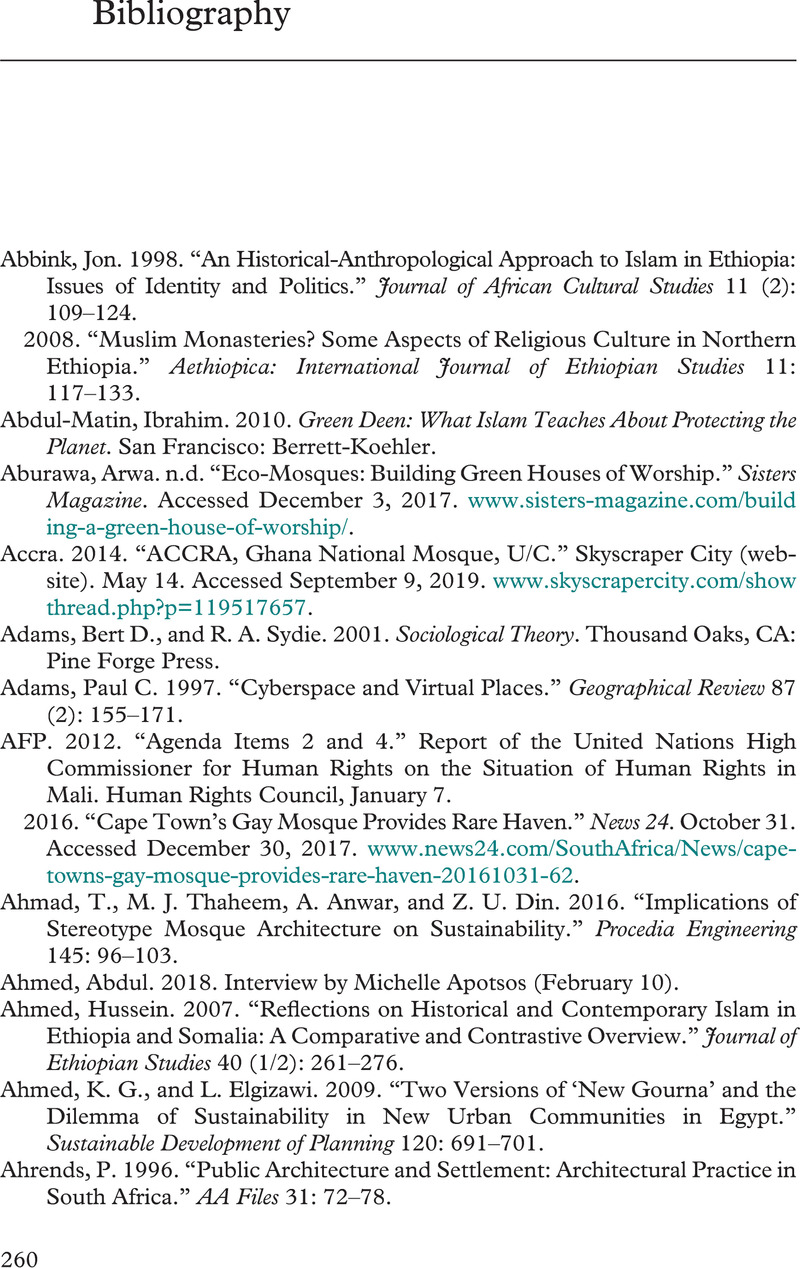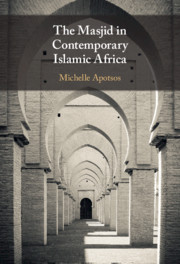Book contents
- The Masjid in Contemporary Islamic Africa
- The Masjid in Contemporary Islamic Africa
- Copyright page
- Dedication
- Contents
- Figures
- Preface
- Acknowledgments
- Introduction
- 1 Spaces Both Radical and Revolutionary: The Intersectional Masjid
- 2 Monument, Memory, and Remembrance: Rethinking the Masjid Through Contemporary Heritage Regimes
- 3 “All the Earth Is a Mosque”: The Masjid as Environmental Advocate
- 4 Masjids on the Move: Mobility and the Growth of “Portable” Islamic Space
- Conclusion
- Bibliography
- Index
- References
Bibliography
Published online by Cambridge University Press: 05 August 2021
- The Masjid in Contemporary Islamic Africa
- The Masjid in Contemporary Islamic Africa
- Copyright page
- Dedication
- Contents
- Figures
- Preface
- Acknowledgments
- Introduction
- 1 Spaces Both Radical and Revolutionary: The Intersectional Masjid
- 2 Monument, Memory, and Remembrance: Rethinking the Masjid Through Contemporary Heritage Regimes
- 3 “All the Earth Is a Mosque”: The Masjid as Environmental Advocate
- 4 Masjids on the Move: Mobility and the Growth of “Portable” Islamic Space
- Conclusion
- Bibliography
- Index
- References
Summary

- Type
- Chapter
- Information
- The Masjid in Contemporary Islamic Africa , pp. 260 - 277Publisher: Cambridge University PressPrint publication year: 2021



